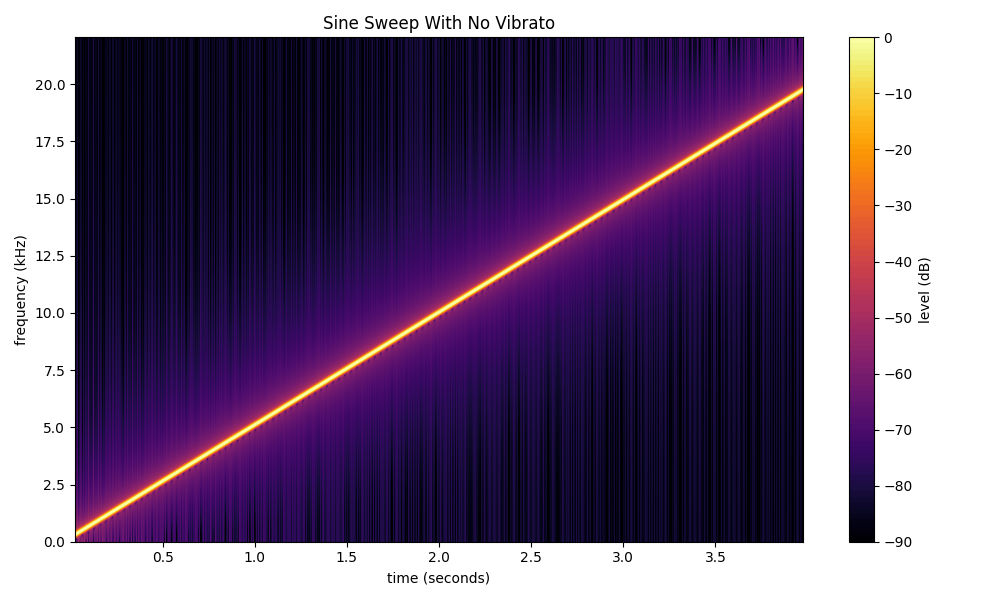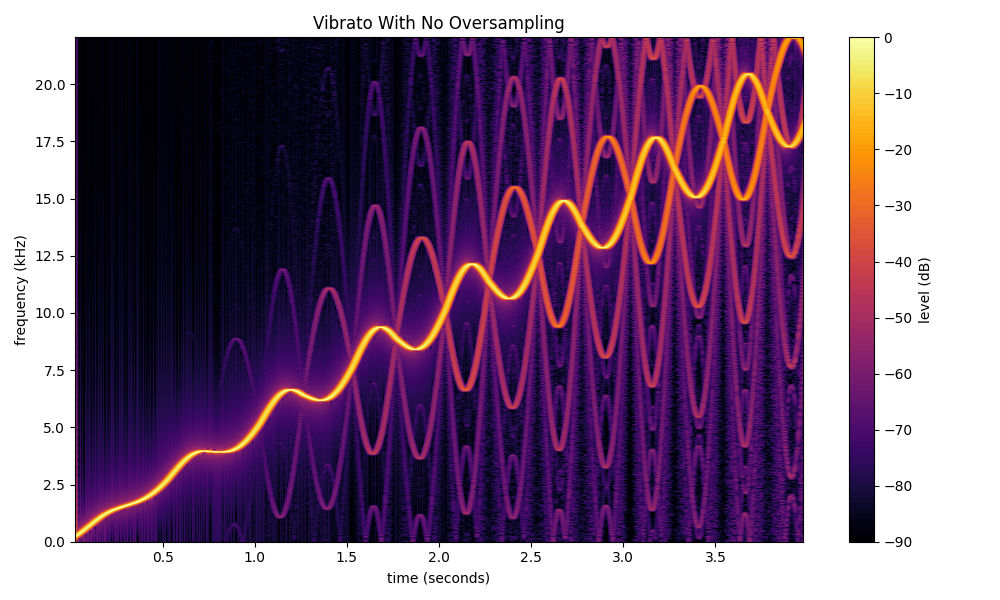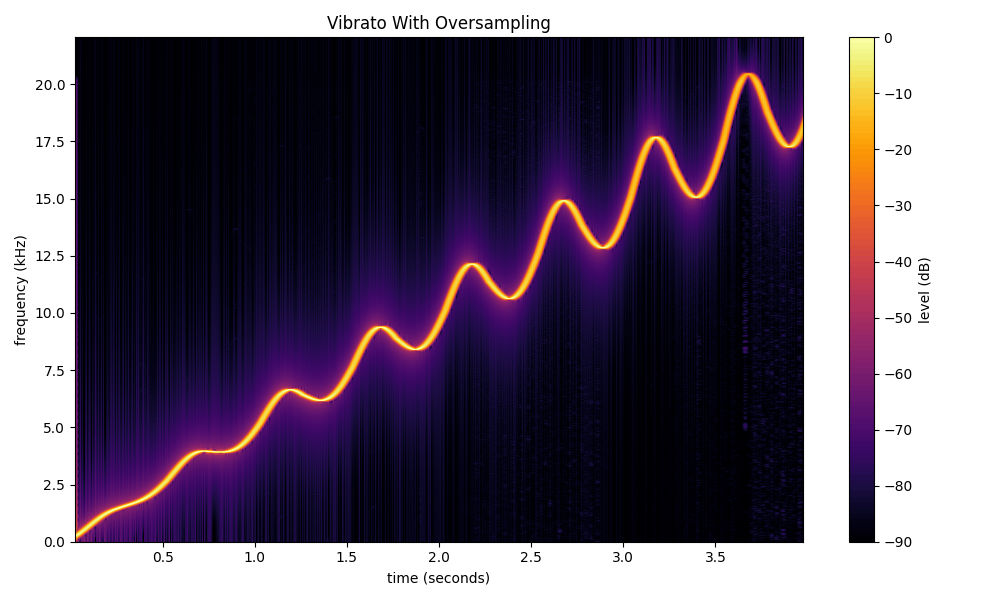Does a Vibrato Effect Need Oversampling?
The short answer is yes. Vibrato effects cause aliasing, and aliasing can be suppressed by oversampling. This article goes into more detail. It's broken down into the following four sections:
- Why We Need Oversampling
- Proof That Vibrato Effects Cause Aliasing
- Audio Examples
- Conclusions
Oversampling is sometimes necessary to achieve professional-quality audio. It's used to suppress aliasing, a type of undesirable sound that appears when audio undergoes certain types of processing. Aliasing affects both digital audio and analog sampled audio (i.e. stomp-boxes that use bucket-brigade technology).
There are many situations where oversampling consumes extra CPU and system resources while providing no audible benefit. The subject is highly-technical though, and identifying quality issues often requires a great deal of specialized experience. In other words, it can be difficult to know what to listen for!
Oversampling is beneficial whenever aliasing rises above perceptible thresholds. It's worth noting that there's a difference between perceptibility and recognizability. Even if most listeners can hear the effects of aliasing, almost none will be able to recognize what it is. They may feel that the audio is of lower-quality, but they won't be able to identify aliasing as the cause.
Proof That Vibrato Effects Cause AliasingTo demonstrate the presence of aliasing, we created a sine-sweep and passed it through our vibrato plugin, King Cobrato. King Cobrato has oversampling, so we're able to create spectrograms with and without oversampling for comparison.
Below is the spectrogram of the input sine-sweep (without any vibrato applied),

Now here's the same sine sweep with a vibrato effect applied, and no oversampling,

The vibrato created a lot squiggly lines. Some of this is desirable, however some of it is aliasing, and it will decrease sound quality. To determine which is which, we can look at same vibrato effect but with oversampling enabled. Oversampling will have the effect of suppressing aliasing if it is present.
The next spectrogram uses King Cobrato's lowest oversampling setting (8x).

All but one of the lines have disappeared! Practically everything in the previous plot was aliasing, and the lowest oversampling setting did a pretty good job of removing it.
Audio ExamplesBelow are three audio clips that correspond to three spectrograms above.
It's a 4-second sine-sweep from 200Hz to 20kHz.
Aliasing can be heard as scratchy swirly background sounds. It's more prevalent towards the end of the sound clip.
Aliasing is no longer audible.
Vibrato effects can, in fact, create aliasing. This aliasing can also significantly degrade audio quality. Fortunately, the aliasing is not too bad, and it can be effectively removed with oversampling.
